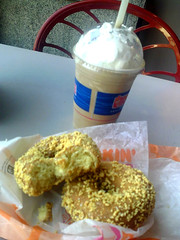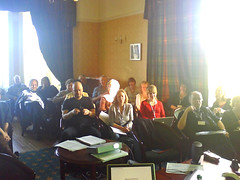Boston.
After a very brief few weeks in Brisbane, I'm back on the road again, for the second leg of my sabbatical. This trip takes me to Boston, where I'm a visiting scholar at MIT for the next couple of months. I'll also present at MiT5 and Creativity & Cognition 6, and when I return to Brisbane at the end of June, I'll hopefully have most of my upcoming produsage book ready to send to my publisher.
 For now, though, I'm taking it easy these first few days here, dealing with my jetlag (which doesn't seem too bad …
For now, though, I'm taking it easy these first few days here, dealing with my jetlag (which doesn't seem too bad …













